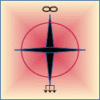Invention and Tools Drive Human Progress and Increase Bandwidth
Introduction: Tools as the Drivers of Innovation
Tools have been the cornerstone of human progress, amplifying our capabilities and transforming the way we interact with the world. From the rudimentary implements of early life forms to the sophisticated machines of the Digital Age, tools have been critical in shaping civilization’s trajectory. This chapter explores the evolution of tools across the ages, charting the innovations that expanded our ability to manipulate, create, and solve problems.
Single Cell Era: Nature’s Simplicity
The earliest forms of life operated without tools, relying entirely on their biological structures and processes for survival. This era marked the baseline of existence, where the concept of external tools was nonexistent.
You were either eating or you were the food. This schism exist until today as animals are either hoofed or have claws, the difference between running or catching.
Primitive Era: The Birth of Tool Use
The emergence of rudimentary tools marked a pivotal step in humanity’s evolution:
Stones and Sticks: Early humans began using natural materials as tools for basic tasks.
Prods and Spears: Sharpened implements were developed for hunting and defense.
Levers and Wheels: Simple mechanical concepts began to take shape, enhancing physical capabilities
This era laid the foundation for human ingenuity and problem-solving.
Awareness Era: Refinement and Complexity
With the development of cognitive skills, tool use became more sophisticated:
Physical Tools: Stone and wooden tools were sharpened and shaped for specialized tasks.
Mental Tools: Abstract thinking led to the development of memory systems, basic logic, and early mathematics.
This period marked a shift toward intentional design and the beginnings of intellectual tools.
Medieval Era: Mechanical Ingenuity
The Medieval period saw significant advancements in mechanical and material technologies:
Crossbows and Slings: Tools for warfare and hunting were refined. Action at a distance was amplified.
Windmills and Gears: Mechanisms harnessed natural forces for energy and production.
Smelting: Metalworking techniques added energy to the process.
Mechanisms: Devices became increasingly complex, incorporating gears and levers.
Measurement: Techniques and standards offered and precise measurement with information sharing.
These innovations demonstrated humanity’s growing mastery over materials and mechanics.
Agricultural Age: Practical Advancements
The Agricultural Age brought tools designed to enhance productivity and efficiency:
Forges: Improved metallurgy enabled the production of stronger and more versatile tools.
Metal Plows and Hammers: Durable metal implements transformed agriculture and construction.
This era focused on practical applications that supported societal growth and resource management.
Enlightenment Era: Precision and Documentation
The Enlightenment introduced a scientific approach to tool-making and usage:
Drafting Tools: Precise instruments facilitated the design of complex machines and structures.
Scientific Instruments: Tools such as microscopes and telescopes expanded human understanding
Project Logbooks and Work Files: Systematic documentation ensured that knowledge was preserved and shared.
This period emphasized the role of precision and data in innovation.
Industrial Age: Mechanization and Automation
The Industrial Age marked the transition to large-scale production and automation:
Kilns and Furnaces: Advanced heating systems supported mass production.
Steam Engines: Powered machinery transformed manufacturing and transportation.
Electricity: Made the energy to drive mechanical processes portable.
Industrial Machinery: Specialized equipment enabled the creation of intricate products.
Assembly lines: Techniques in creating standard assembly scripts and workstations led to uniformly and higher quality at higher quantities.
Vacuum Tubes: Amplification and switching harnessed Electricity.
Data Acquisition: Tools for collecting and analyzing information became essential for decision-making.
Computers: Early analog ratio-metric signal manipulation allowed “electric” slide rules. Later digital technology increased accuracy of results.
This era redefined tools as integral components of industrial and technological systems.
Digital Age: The Era of Smarter, Faster Tools
The Digital Age has brought tools that integrate advanced computing and automation:
Transistors: Replaced vacuum tubes using less energy and physical space.
Integrated Circuits: Allowed multiple transistors to be combined into smaller physical space at less cost and power.
Microprocessors: Small, inexpensive stored program logic became the building blocks of modern electronics enabling unprecedented miniaturization and low power.
Digital communication:The use of intelligence at both ends of communication channels led to techniques of data coding that allows faster data rates — “Bandwidth.”
Internet: Two way sharing of data allows widespread use for multiple purposes. This synergy led to a quantum increase in societal bandwidth.
Artificial Intelligence: Intelligent systems now assist in tool-making, decision-making, and problem-solving.
This era redefined tools as integral components of industrial and technological systems.
